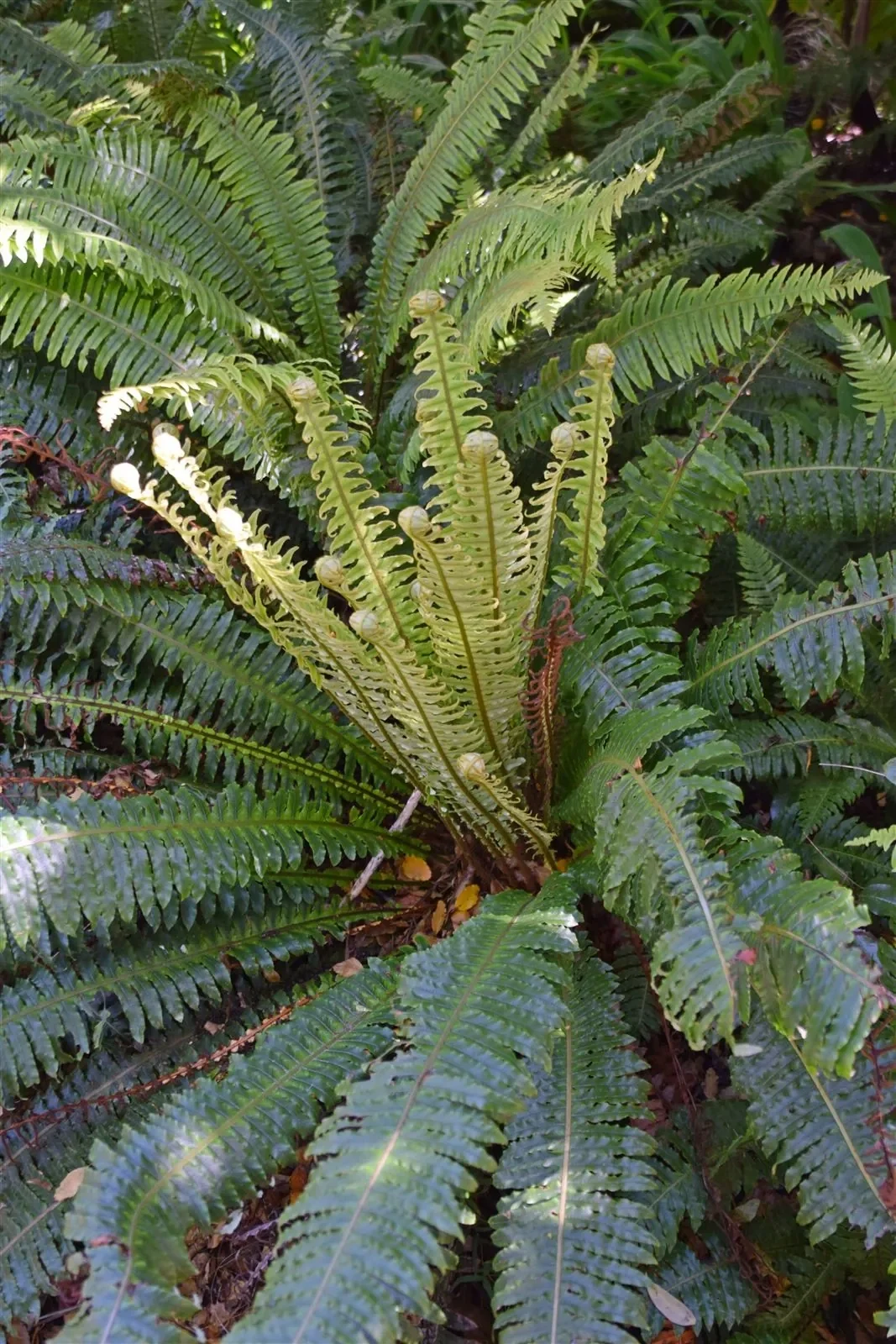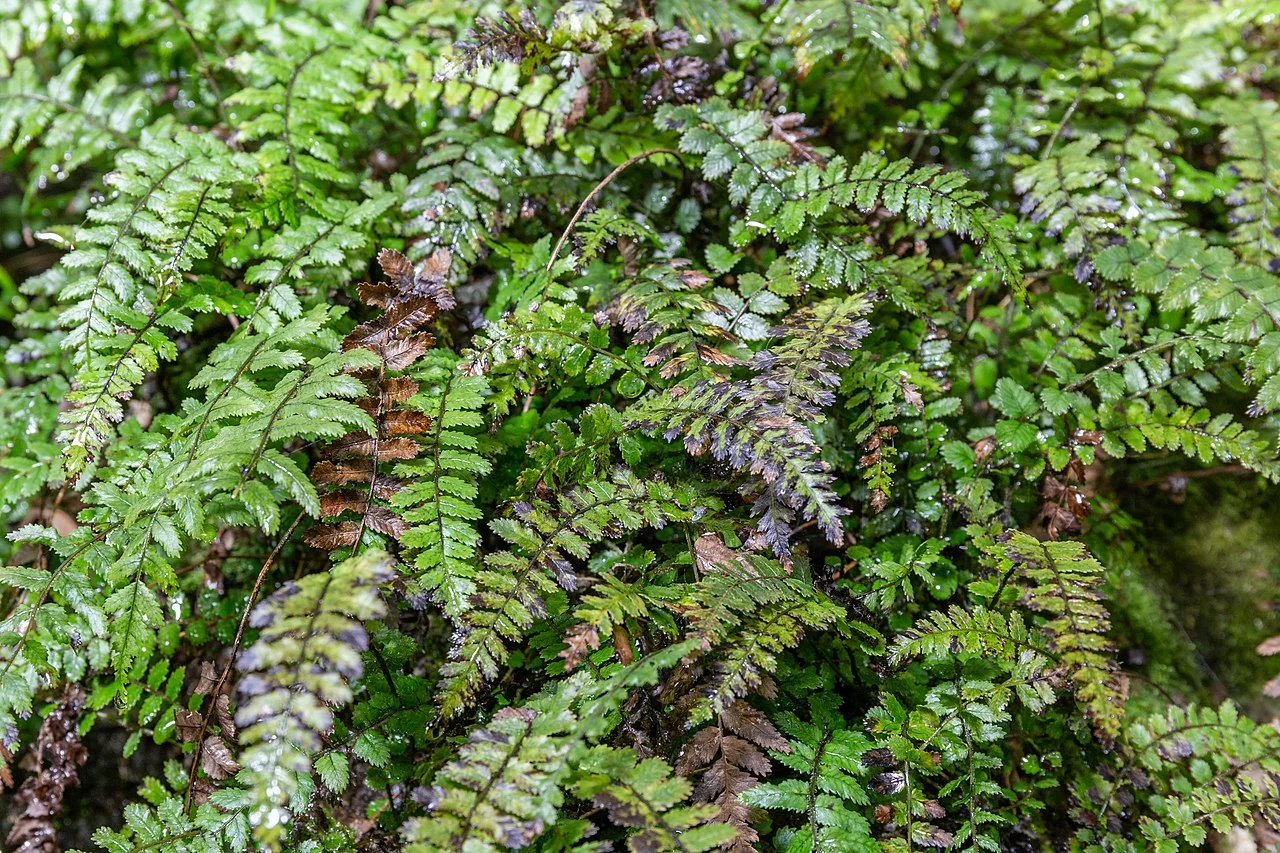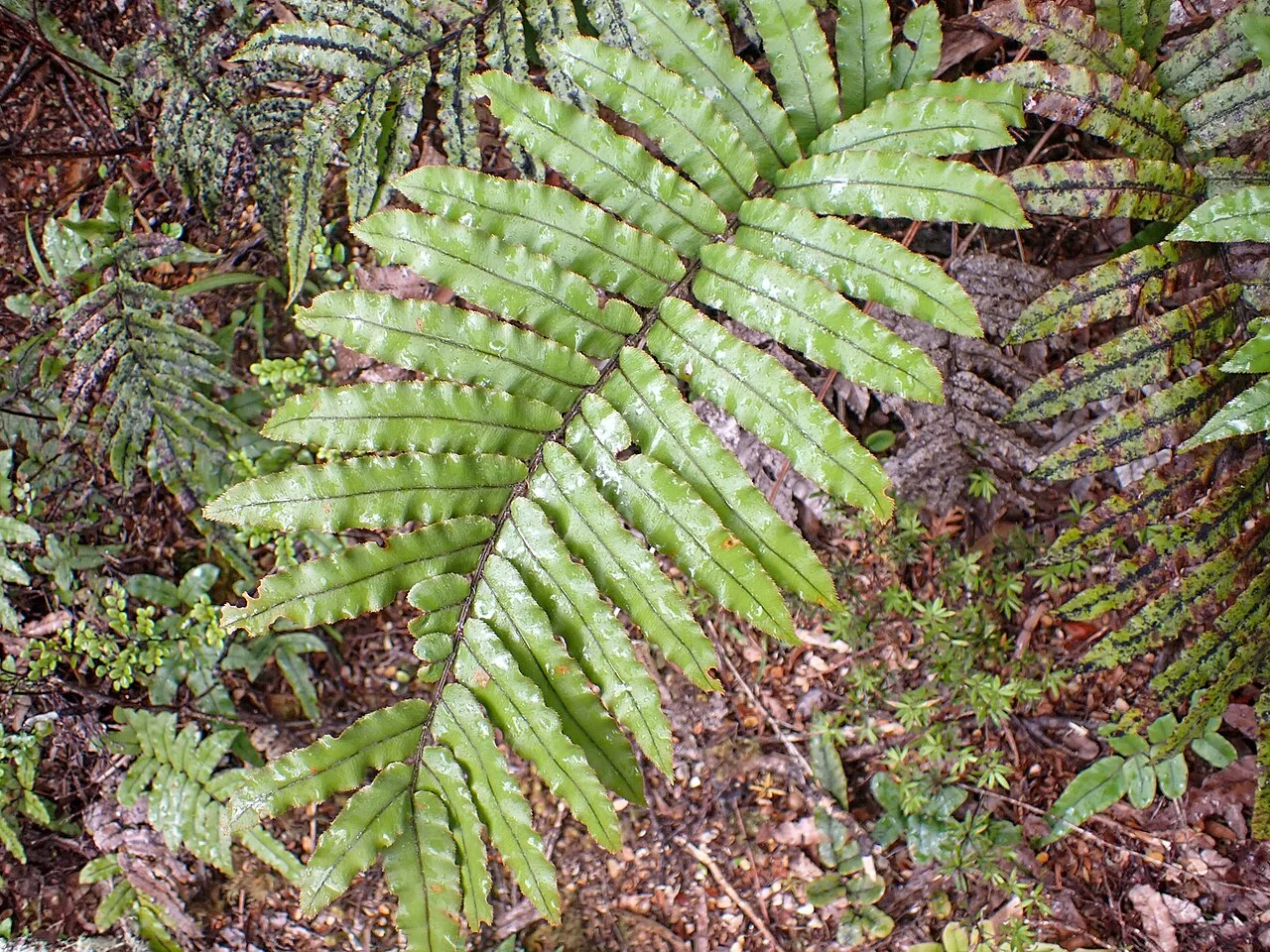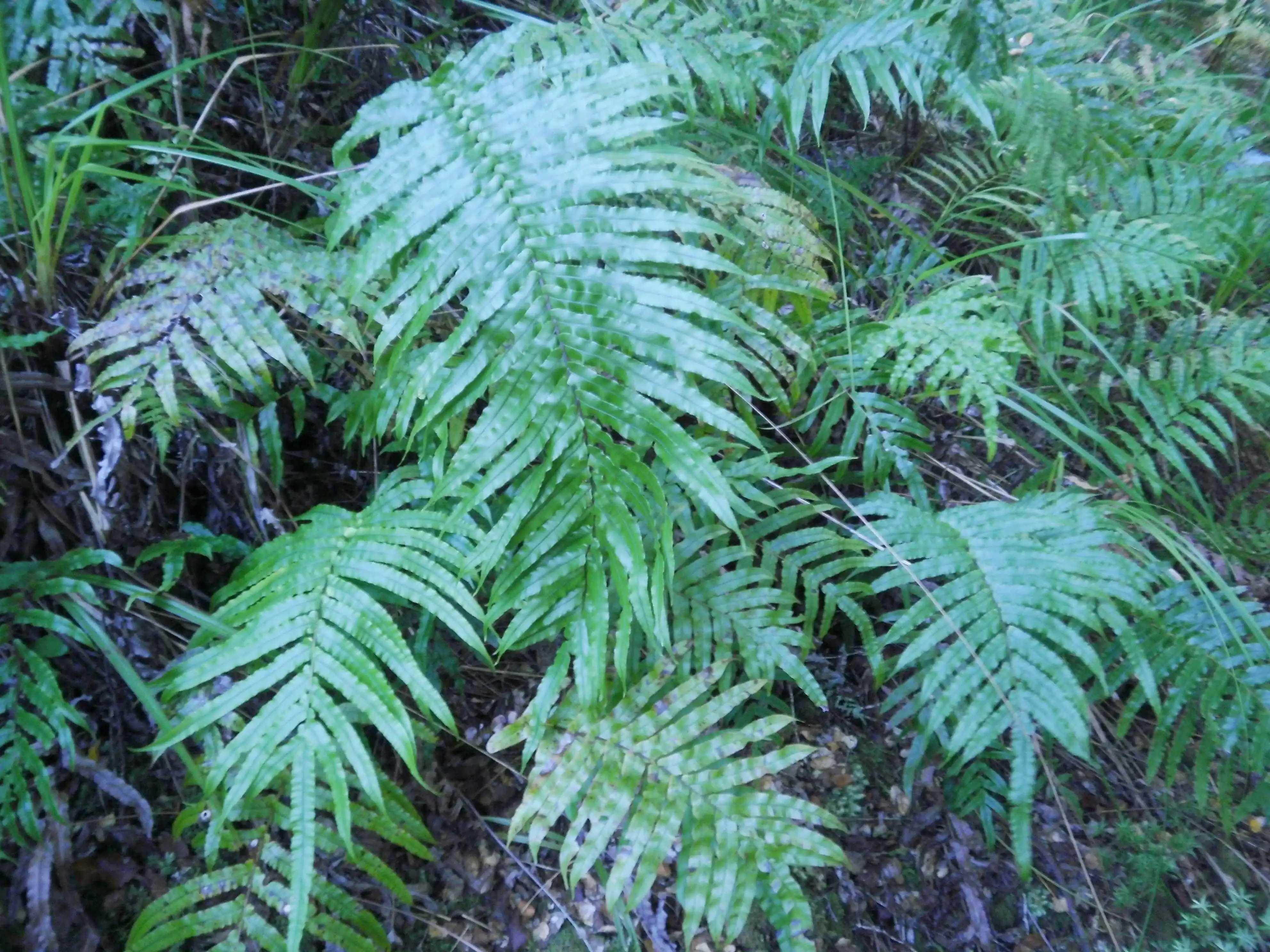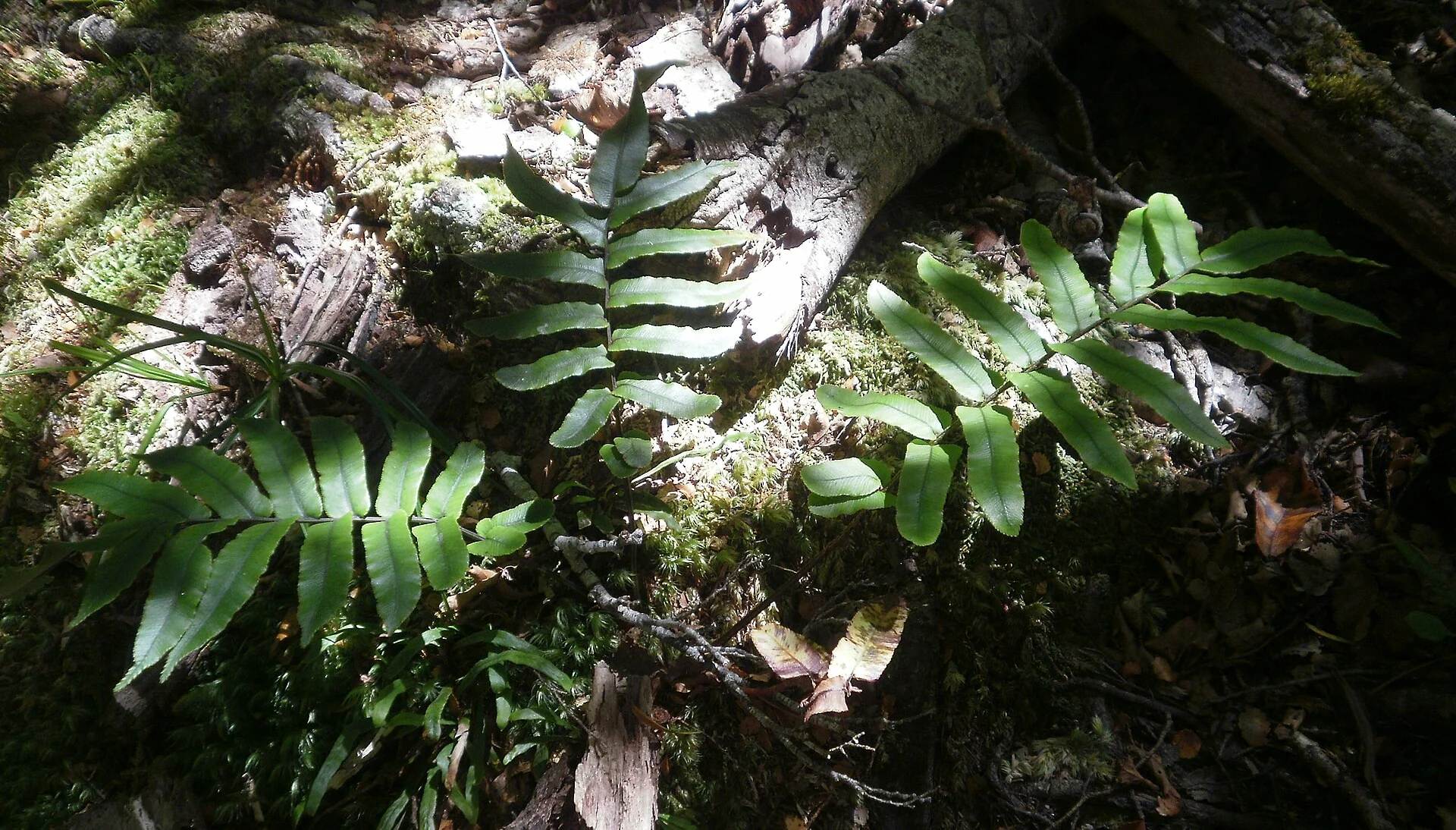
Crested Hard Fern
Blechnum procerum
Explore more NZ native plant guides in our index .
Introduction
About Crested Hard Fern
Blechnum procerum , commonly known as Crested Hard Fern or Small Kiokio, is a small to medium-sized native fern of New Zealand. It is characterized by its dark green, leathery fronds that grow in a compact, often crested, rosette. This fern is typically found in damp, shady areas of forests, along stream banks, and on rocky outcrops.

Plant Description
Blechnum procerum , commonly known as Crested Hard Fern or Small Kiokio, is a small to medium-sized native fern of New Zealand. It is characterized by its dark green, leathery fronds that grow in a compact, often crested, rosette. This fern is typically found in damp, shady areas of forests, along stream banks, and on rocky outcrops. Its fronds are dimorphic, with sterile fronds that are broad and leafy, and fertile fronds that are narrower and more upright. New fronds often emerge with a bronzish or reddish hue before maturing to dark green.
Quick Facts
Fern Summary
| Scientific Name | Blechnum Procerum |
|---|---|
| Height | 20-50 cm |
| Spread | 30-60 cm |
| Water Needs | Moderate to high; prefers consistently moist soil |
| Light | Partial to full shade |
| Frost Tolerance | Moderate |
| Salt Tolerance | Low |
| Growth Rate | Slow |
| Lifespan | Perennial |
Climate Best Suited to
Blechnum procerum is found throughout New Zealand in lowland to montane forests. It thrives in a mild, humid climate with consistent moisture and protection from strong winds and direct sunlight.
Regional Suitability
| Whangārei | Ideal |
| Auckland | Ideal |
| Hamilton | Suitable |
| Rotorua | Suitable |
| Tauranga | Ideal |
| Gisborne | Ideal |
| New Plymouth | Ideal |
| Whanganui | Ideal |
| Palmerston North | Suitable |
| Napier | Ideal |
| Wellington | Ideal |
| Nelson | Ideal |
| Christchurch | Suitable |
| Dunedin | Suitable |
| Invercargill | Suitable |
| City | Climate Suitability |
|---|
Habitat
Natural Distribution
Blechnum procerum , also known as Crested Hard Fern or Small Kiokio, is a widespread fern species predominantly found throughout New Zealand, including the North Island, South Island, Stewart Island, Chatham Islands, and several subantarctic islands (Antipodes, Auckland, and Campbell Islands).
This fern occupies a wide altitudinal range, from lowland areas near sea level up to montane and subalpine zones, reaching elevations of 1200 meters on Mt Ruapehu and up to 1375 meters on Mt Peel in north-west Nelson. It is less common below 300 meters in the North Island.
Blechnum procerum thrives in diverse habitats, including:
- Forests: Open kauri, podocarp, broadleaved, and beech forests, as well as under mānuka and kānuka.
- Open Areas: Scrub, among Phormium , under introduced conifers, subalpine scrub, and tussock grassland. It can also be found in swamp forests.
- Specific Microhabitats: It grows on the forest floor, streambanks, in gullies, along tracksides, at forest margins, in open rocky areas, on roadside banks and cuttings, in ditches, on swampy ground, on pākihi soils, and in rough pasture.
The fern prefers damp, shady conditions with consistently moist, well-drained, humus-rich soil, and a mild, humid climate. While it generally favors shade, it can also tolerate open aspects and a range of moisture regimes.
Plant Conservation
Threats and Efforts
Small Kiokio ( Blechnum procerum , now Parablechnum procerum ) is a native New Zealand fern with a national conservation status of "Not Threatened." This classification reflects its relatively stable populations across its range, particularly in the South Island where it becomes more common moving southward and reaches sea level in southern regions.
Despite its secure national status, small kiokio faces ongoing conservation challenges that require continued habitat protection and management. The primary threats include habitat loss and fragmentation through deforestation, land conversion for agriculture and urban development, and modifications to its natural habitats including mixed forests, subalpine scrub, and tussock grasslands. Its preference for specific altitude ranges and cooler climates makes it potentially vulnerable to climate change impacts, particularly at the edges of its distribution. Changes to forest composition and structure, including alterations to understory conditions and moisture levels, can impact local populations. Competition from invasive plant species, browsing pressure from introduced mammals, and soil disturbance from human activities also pose challenges to natural regeneration and population stability. The species' distribution across diverse habitat types from sea level to subalpine zones requires ecosystem-level conservation approaches that protect the full range of environments it occupies. Conservation efforts focus on protecting intact forest and grassland ecosystems, controlling invasive species, maintaining appropriate land management practices that preserve native understory communities, and supporting restoration projects that include native fern species. Its role as a traditional resource for Māori cultural practices makes its conservation culturally significant for maintaining connections to traditional knowledge and practices. By supporting habitat protection across its range, sustainable land management practices, and education about the importance of native understory species, we can help ensure the continued survival of this culturally and ecologically important native fern.
Growing Requirements
Soil Requirements
Prefers moist, well-drained, humus-rich soil.
Light Requirements
Thrives in partial to full shade. Avoid direct sunlight, which can scorch the fronds.
Water Requirements
Requires consistent moisture, especially during dry periods. Do not allow the soil to dry out completely.
Planting Guide
-
When to Plant
Plant in autumn or spring.
-
Site Preparation
Choose a shady site with moist, well-drained, humus-rich soil.
-
Planting and Aftercare
Dig a hole twice the width of the root ball. Place the fern in the hole, ensuring the crown is level with the soil surface. Backfill with soil and water thoroughly. Apply a layer of mulch.
Ecological Significance
Blechnum procerum , commonly known as Crested Hard Fern or Small Kiokio, holds significant ecological importance within its native New Zealand habitats. This endemic fern is widely distributed across the North Island, South Island, Stewart Island, Chatham Islands, and subantarctic islands, thriving in diverse environments from lowland to montane forests, subalpine scrub, and tussock grasslands.
- Habitat and Shelter: Blechnum procerum provides crucial habitat and shelter for small invertebrates within the forest understory, contributing to the biodiversity of these ecosystems.
- Groundcover and Soil Stabilization: As a creeping fern, it can form extensive groundcover, which likely aids in soil stabilization and moisture retention in its natural settings, particularly on streambanks, in gullies, and on rocky outcrops.
- Adaptability: The fern's adaptability to a wide range of conditions, including varying moisture regimes and light exposure (from open areas to deep shade), contributes to its widespread presence and resilience across different ecological niches. This adaptability makes it a robust component of various New Zealand ecosystems.
- Genetic Diversity: Blechnum procerum is known to hybridize with other Blechnum species, such as B. novae-zelandiae and B. montanum , leading to a spectrum of intermediate forms. This hybridization contributes to the genetic diversity within the genus and the broader fern flora of New Zealand.
Its presence in diverse habitats, from damp, shady forest floors to open subalpine areas, highlights its ecological flexibility and its role in maintaining the health and complexity of New Zealand's natural landscapes.
Uses and Significance
Garden Uses
- An excellent fern for shady borders, woodland gardens, rockeries, and containers.
- Its compact size makes it suitable for smaller spaces.
Cultural Significance
Traditional Uses and Values
While not as widely documented for traditional Māori uses as some other ferns, the Crested Hard Fern ( Blechnum procerum ) was recognized for its presence in healthy forest ecosystems. Its fronds may have been used for weaving or other purposes, and the plant was likely used in rongoā (traditional Māori medicine) for various ailments.
Landscaping Uses
Garden Design Applications
Blechnum procerum , also known as Crested Hard Fern or Small Kiokio, is a versatile plant with several valuable landscaping uses, particularly for creating naturalistic and lush environments in shaded garden areas.
- Shady Borders and Woodland Gardens: It is an excellent choice for adding texture and form to shady borders and woodland garden settings. It thrives in partial to full shade with moist, well-drained, humus-rich soil, making it a perfect fit for these environments.
- Rockeries: Its compact size and elegant fronds make it suitable for planting in rockeries, where it can soften the edges of stones and provide a natural, serene contrast.
- Containers: Blechnum procerum can be successfully grown in containers, offering flexibility for patios, balconies, or other areas where garden space is limited. This allows its beauty to be appreciated in various settings.
- Groundcover: This fern is an effective groundcover, spreading slowly by underground rhizomes to form bushy clumps. In appropriate conditions, it can even be used to establish fern "meadows," creating a lush, green carpet.
- Edging and Underplanting: It is suitable for edging garden beds, providing a neat and natural boundary. It can also be used for underplanting taller trees and shrubs, adding a lower layer of foliage that complements the overall garden design.
- Ecological Plantings: In ecological landscaping, it enhances garden structure and provides habitat and resources for small invertebrates and birds, contributing to the garden's biodiversity.
- Visual Interest: The new fronds of Blechnum procerum emerge with an intriguing bronzish colour, adding a distinctive visual element and seasonal interest to the landscape before maturing to a dark green.
Seasonal Care Calendar
Spring
- Apply a layer of compost or leaf mould to enrich the soil and retain moisture.
Summer
- Water regularly, especially during dry periods.
Autumn
- No special care required.
Winter
- Protect from heavy frosts in colder regions.
Pruning and Maintenance
Frond Care
Remove any old, damaged, or yellowing fronds as needed to maintain the plant's appearance.
Prune Crested Hard Fern lightly to maintain structure; remove damaged shoots and avoid hard cuts on older wood.
How to Grow Crested Hard Fern
From Division
Division represents the most successful and straightforward propagation method for Crested Hard Fern, taking advantage of its natural creeping rhizome growth habit that spreads horizontally to form expanding colonies over time. This hardy ground-covering fern naturally creates new plantlets along its creeping stem system, making it exceptionally easy to propagate through division. The optimal timing for division is during spring when new growth is beginning to emerge, or early autumn when cooler temperatures and increased rainfall provide ideal conditions for rapid establishment. Begin by carefully lifting sections of the established colony using a garden fork, working gently to preserve the extensive but shallow root system that spreads just below the soil surface. Crested Hard Fern develops a network of creeping rhizomes that extend horizontally through the soil, producing new fronds at regular intervals along their length and creating natural division points. Once a section is lifted, examine the rhizome structure to identify areas where individual plants with their own root systems have formed. Use clean, sharp secateurs or a knife to cut through the connecting rhizomes, ensuring each division includes both healthy roots and several established fronds for successful transplantation. Divisions can be quite small as this species establishes readily, though larger sections provide more immediate visual impact and faster coverage. Each division should have at least 2-3 healthy fronds and a portion of the creeping rhizome with active growing points. Replant divisions immediately at the same depth they were previously growing, spacing them 30-50cm apart to allow for natural spreading. Choose locations that match the species' preference for moist, well-draining soil in partial shade to full sun conditions. Water thoroughly after planting and maintain consistent moisture during the establishment period, typically 4-6 weeks during favorable growing conditions. This method is particularly effective for creating ground cover plantings and establishing the species in restoration projects where its adaptive nature and spreading habit provide excellent erosion control.
From Spores
Spore propagation offers an authentic method for growing Crested Hard Fern that maintains the genetic diversity essential for this widespread and adaptable New Zealand native species. This method requires patience and attention to sterile conditions but provides the opportunity to raise large numbers of plants for restoration projects or garden plantings. Crested Hard Fern produces spores on specialized fertile fronds that are typically more upright than the prostrate sterile fronds, with spores contained in linear sori arranged along the margins of the pinnae. For successful spore collection, monitor fertile fronds during late summer and autumn when the sori have matured to a dark brown colour but have not yet opened to release their contents. Collect fertile fronds in the morning when humidity levels are optimal, cutting them with clean secateurs and placing them face-down on clean white paper in a dry, well-ventilated location. Allow 24-48 hours for natural spore release, which will appear as a fine brown powder on the collection paper. Prepare a sterile growing medium using equal parts quality seed-raising mix, sphagnum moss, and vermiculite, sterilized by pouring boiling water over the mixture and allowing it to cool completely before use. Sow spores thinly across the surface of the moistened medium in clean containers, covering with glass or clear plastic to maintain high humidity while providing some air circulation to prevent fungal problems. Maintain consistent temperatures of 18-22°C in bright, indirect light, avoiding direct sunlight which can overheat the developing gametophytes and cause failure. The first green, heart-shaped gametophytes typically appear within 3-6 weeks, followed by the gradual development of tiny sporophyte plants over the following 2-4 months. Young sporophytes require consistent moisture and should be transplanted to individual small containers when they develop their first true fronds and reach 1-2cm in height. This method is particularly valuable for conservation work and for gardeners interested in understanding the complete reproductive cycle of this important ground-cover fern species.
From Rhizome Cuttings
Rhizome cutting propagation provides an excellent intermediate method between division and spore cultivation for multiplying Crested Hard Fern, particularly useful when working with established colonies where complete division might be disruptive. This technique takes advantage of the species' remarkable ability to regenerate new plants from sections of its creeping rhizome system, even when separated from the parent plant. The method is especially valuable for gardeners wanting to establish new plantings without disturbing entire established colonies or for creating multiple plants from limited source material. The optimal timing for rhizome cutting collection is during the active growing season from spring through early autumn when the rhizomes contain maximum stored energy and regenerative potential. Begin by carefully excavating along the edges of established colonies to expose sections of the creeping rhizome system without disturbing the main plant. Select healthy, firm rhizome sections that are 5-8cm in length and show evidence of active growth such as emerging frond buds or root initials. Use a clean, sharp knife to cut sections from the main rhizome system, ensuring each cutting includes at least one dormant bud or growing point that will develop into new fronds. Allow cut surfaces to dry and callus for 2-4 hours in a shaded, well-ventilated location to reduce the risk of fungal infection during the establishment phase. Prepare a suitable growing medium using equal parts quality potting mix and coarse sand or perlite to provide the excellent drainage essential for healthy rhizome development. Plant rhizome cuttings horizontally in the prepared medium, covering them with approximately 1cm of growing medium while ensuring the growing points remain near the surface. Maintain consistent moisture without waterlogging and provide bright, indirect light in a protected environment until new growth appears, typically within 3-6 weeks under favorable conditions. Once new fronds have emerged and the cutting shows signs of active growth, gradually acclimatize plants to normal growing conditions before transplanting to their permanent locations.
Pests and Diseases
Generally Hardy
Crested Hard Fern is generally robust and pest- and disease-free when grown in optimal conditions that mimic its diverse natural habitats. However, it can become susceptible to root rot if left in poorly drained or waterlogged soils for extended periods, as it prefers consistently moist but well-aerated media. Ensure good air circulation and avoid overly dense planting to mitigate fungal issues. Occasionally, common fern pests like mealybugs or scale insects might appear, especially in stressed plants or in overly dry conditions. These can typically be managed with horticultural soap or by improving growing conditions.
Bonus Tip
Expert Growing Advice
The common name "Crested Hard Fern" refers to the often crested appearance of its fronds, which adds a unique textural element to shaded gardens. In ecological plantings, it enhances structure and provides seasonal resources for birds and invertebrates. Additionally, new fronds of Blechnum procerum can display an intriguing bronzish colour, adding a distinguished appearance to the plant as it unfurls.

